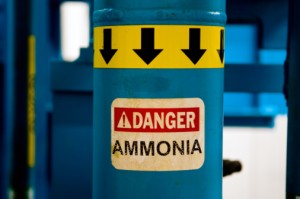 Ammonia is considered a high health hazard because it is corrosive to the skin, eyes, and lungs. Exposure to 300 parts per million (ppm) is immediately dangerous to life and health. Ammonia is also flammable at concentrations of approximately 15% to 28% by volume in air. When mixed with lubricating oils, its flammable concentration range is increased. It can explode if released in an enclosed space with a source of ignition present, or if a vessel containing anhydrous ammonia is exposed to fire. Fortunately, ammonia has a low odor threshold (20 ppm), so most people will seek relief at much lower concentrations.
Ammonia is considered a high health hazard because it is corrosive to the skin, eyes, and lungs. Exposure to 300 parts per million (ppm) is immediately dangerous to life and health. Ammonia is also flammable at concentrations of approximately 15% to 28% by volume in air. When mixed with lubricating oils, its flammable concentration range is increased. It can explode if released in an enclosed space with a source of ignition present, or if a vessel containing anhydrous ammonia is exposed to fire. Fortunately, ammonia has a low odor threshold (20 ppm), so most people will seek relief at much lower concentrations.
Category: Risk Management
Workplace Health – Worker Productivity
 Workplace health programs that improve employee health by reducing, preventing or controlling diseases can affect worker productivity.
Workplace health programs that improve employee health by reducing, preventing or controlling diseases can affect worker productivity.
Improvements in physical, mental, and emotional health enhance stamina, concentration, and focus leading to greater work output.
The cost savings of providing a workplace health program can be measured against:
- Absenteeism among employees due to illness or injury
- Reduced overtime to cover absent employees
- Costs to train replacement employees
Work Zone Traffic Safety
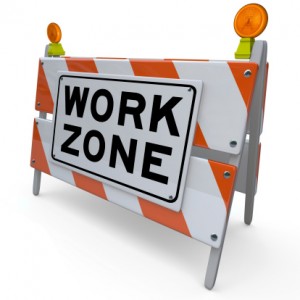 Summary of Work Zone Traffic Safety
Summary of Work Zone Traffic Safety
- The Hazard: death or serious injury from being struck by vehicles or equipment in work zones.
- Who is at risk: streets/highways, utilities and other public works department workers who maintain roadways, bridges, sewers, catch basins, etc.
- Prevention: reducing the speed of vehicles, traffic control plans warning motorists of work zones, guiding traffic safely through the work zone, and returning passing vehicles to normal traffic flow.
- Laws: The U.S. Department of Transportation, Federal Highway Administration’s (FHWA) Manual on Uniform Traffic Control Devices (MUTCD). The Occupational Safety and Health Administration (OSHA) enforced the MUTCD (29 CFR 1926.200-203).
Four Functional Categories of Fall Protection Products
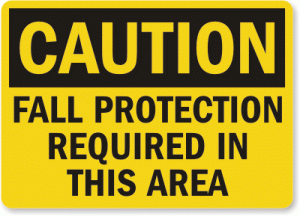 All fall protection products fit into four functional categories.
All fall protection products fit into four functional categories.
1. Fall Arrest; 2. Positioning; 3. Suspension; 4. Retrieval.
Fall Arrest
A fall arrest system is required if any risk exists that a worker may fall from an elevated position, as a general rule, the fall arrest system should be used anytime a working height of six feet or more is reached. Working height is the distance from the walking/working surface to a grade or lower level. A fall arrest system will only come into service should a fall occur. A full-body harness with a shock-absorbing lanyard or a retractable lifeline is the only product recommended. A full-body harness distributes the forces throughout the body, and the shock-absorbing lanyard decreases the total fall arresting forces.
Positioning
This system holds the worker in place while keeping his/her hands free to work. Whenever the worker leans back, the system is activated. However, the personal positioning system is not specifically designed for fall arrest purposes.
Suspension
This equipment lowers and supports the worker while allowing a hands-free work environment, and is widely used in window washing and painting industries. This suspension system components are not designed to arrest a free fall, a backup fall arrest system should be used in conjunction with the suspension system.
Retrieval
Preplanning for retrieval in the event of a fall should be taken into consideration when developing a proactive fall management program.
via Fall Protection.
What is an Emergency Action Plan?
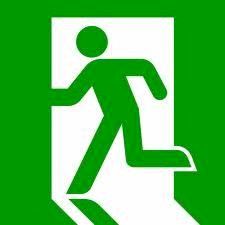 An emergency action plan (EAP) is a written document required by particular OSHA standards [29 CFR 1910.38(a)]. The purpose of an EAP is to facilitate and organize employer and employee actions during workplace emergencies. Well developed emergency plans and proper employee training (such that employees understand their roles and responsibilities within the plan) will result in fewer and less severe employee injuries and less structural damage to the facility during emergencies. A poorly prepared plan, likely will lead to a disorganized evacuation or emergency response, resulting in confusion, injury, and property damage.
An emergency action plan (EAP) is a written document required by particular OSHA standards [29 CFR 1910.38(a)]. The purpose of an EAP is to facilitate and organize employer and employee actions during workplace emergencies. Well developed emergency plans and proper employee training (such that employees understand their roles and responsibilities within the plan) will result in fewer and less severe employee injuries and less structural damage to the facility during emergencies. A poorly prepared plan, likely will lead to a disorganized evacuation or emergency response, resulting in confusion, injury, and property damage.
via Evacuation Plans and Procedures eTool | What is an Emergency Action Plan?.
What is Crystalline Silica?
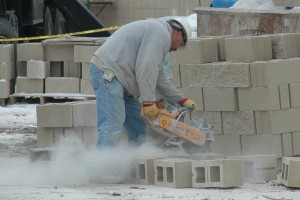 Respirable crystalline silica – very small particles at least 100 times smaller than ordinary sand you might encounter on beaches and playgrounds – is created during work operations involving stone, rock, concrete, brick, block, mortar, and industrial sand. Exposures to respirable crystalline silica can occur when cutting, sawing, grinding, drilling, and crushing these materials. These exposures are common in brick, concrete, and pottery manufacturing operations, as well as during operations using industrial sand products, such as in foundries, sand blasting, and hydraulic fracturing (fracking) operations in the oil and gas industry.
Respirable crystalline silica – very small particles at least 100 times smaller than ordinary sand you might encounter on beaches and playgrounds – is created during work operations involving stone, rock, concrete, brick, block, mortar, and industrial sand. Exposures to respirable crystalline silica can occur when cutting, sawing, grinding, drilling, and crushing these materials. These exposures are common in brick, concrete, and pottery manufacturing operations, as well as during operations using industrial sand products, such as in foundries, sand blasting, and hydraulic fracturing (fracking) operations in the oil and gas industry.
Workplace Health – Ergonomics
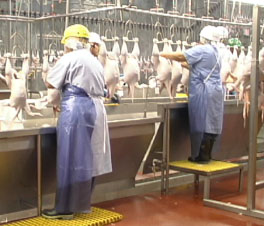 Ergonomics is the science of fitting workplace conditions and job demands to the capability of the working population. The goal of ergonomics is to reduce stress and eliminate injuries and disorders associated with the overuse of muscles, bad posture, and repeated tasks. A workplace ergonomics program can aim to prevent or control injuries and illnesses by eliminating or reducing worker exposure to WMSD risk factors using engineering and administrative controls. PPE is also used in some instances but it is the least effective workplace control to address ergonomic hazards. Risk factors include awkward postures, repetition, material handling, force, mechanical compression, vibration, temperature extremes, glare, inadequate lighting, and duration of exposure. For example, employees who spend many hours at a workstation may develop ergonomic-related problems resulting in musculoskeletal disorders (MSDs).
Ergonomics is the science of fitting workplace conditions and job demands to the capability of the working population. The goal of ergonomics is to reduce stress and eliminate injuries and disorders associated with the overuse of muscles, bad posture, and repeated tasks. A workplace ergonomics program can aim to prevent or control injuries and illnesses by eliminating or reducing worker exposure to WMSD risk factors using engineering and administrative controls. PPE is also used in some instances but it is the least effective workplace control to address ergonomic hazards. Risk factors include awkward postures, repetition, material handling, force, mechanical compression, vibration, temperature extremes, glare, inadequate lighting, and duration of exposure. For example, employees who spend many hours at a workstation may develop ergonomic-related problems resulting in musculoskeletal disorders (MSDs).
via CDC – Workplace Health – Implementation – Work-Related Musculoskeletal Disorders (WMSD) Prevention.
When To Conduct an Accident/Incident Investigation
 All incidents, whether a near miss or an actual injury-related event, should be investigated. Near miss reporting and investigation allow you to identify and control hazards before they cause a more serious incident. Accident/incident investigations are a tool for uncovering hazards that either were missed earlier or have managed to slip out of the controls planned for them. It is useful only when done with the aim of discovering every contributing factor to the accident/incident to “foolproof” the condition and/or activity and prevent future occurrences. In other words, your objective is to identify root causes, not to primarily set blame.
All incidents, whether a near miss or an actual injury-related event, should be investigated. Near miss reporting and investigation allow you to identify and control hazards before they cause a more serious incident. Accident/incident investigations are a tool for uncovering hazards that either were missed earlier or have managed to slip out of the controls planned for them. It is useful only when done with the aim of discovering every contributing factor to the accident/incident to “foolproof” the condition and/or activity and prevent future occurrences. In other words, your objective is to identify root causes, not to primarily set blame.
DEFINITIONS
- ACCIDENT – The National Safety Council defines an accident as an undesired event that results in personal injury or property damage.
- INCIDENT – An incident is an unplanned, undesired event that adversely affects completion of a task.
- NEAR MISS – Near misses describe incidents where no property was damaged and no personal injury sustained, but where, given a slight shift in time or position, damage and/or injury easily could have occurred.
OSHA’s 2013 Top Ten Most Cited Violations
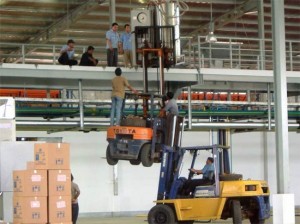 The following is a list of the top 10 most frequently cited standards following inspections of worksites by federal OSHA. OSHA publishes this list to alert employers about these commonly cited standards so they can take steps to find and fix recognized hazards addressed in these and other standards before OSHA shows up. Far too many preventable injuries and illnesses occur in the workplace.
The following is a list of the top 10 most frequently cited standards following inspections of worksites by federal OSHA. OSHA publishes this list to alert employers about these commonly cited standards so they can take steps to find and fix recognized hazards addressed in these and other standards before OSHA shows up. Far too many preventable injuries and illnesses occur in the workplace.
- 1926.501 – Fall Protection
- 1910.1200 – Hazard Communication
- 1926.451 – Scaffolding
- 1910.134 – Respiratory Protection
- 1910.305 – Electrical, Wiring Methods
- 1910.178 – Powered Industrial Trucks
- 1926.1053 – Ladders
- 1910.147 – Lockout/Tagout
- 1910.303 – Electrical, General Requirements
- 1910.212 – Machine Guarding
via Top Ten Standards.
Benjamin Franklin Knew the Value of Risk Management
 The history of risk management can be traced back to the 1600’s. The modern day version is a five step process:
The history of risk management can be traced back to the 1600’s. The modern day version is a five step process:
- Identify Risk
- Analyze Risk
- Control Risk
- Finance Risk
- Measure Results
Unfortunately business often get’s poor advice and finance their risk with insurance while skipping the first 3 steps. This is good for insurance companies but leads to higher cost for the business.
Benjamin Franklin said “An ounce of prevention is worth a pound of cure.”
The ounce of prevention he was talking about is the first 3 steps of risk management. The pound of cure is insurance.
To find out more about the Ottawa Kent Risk Management 365 Process go to: http://www.ottawakent.com/business.html
